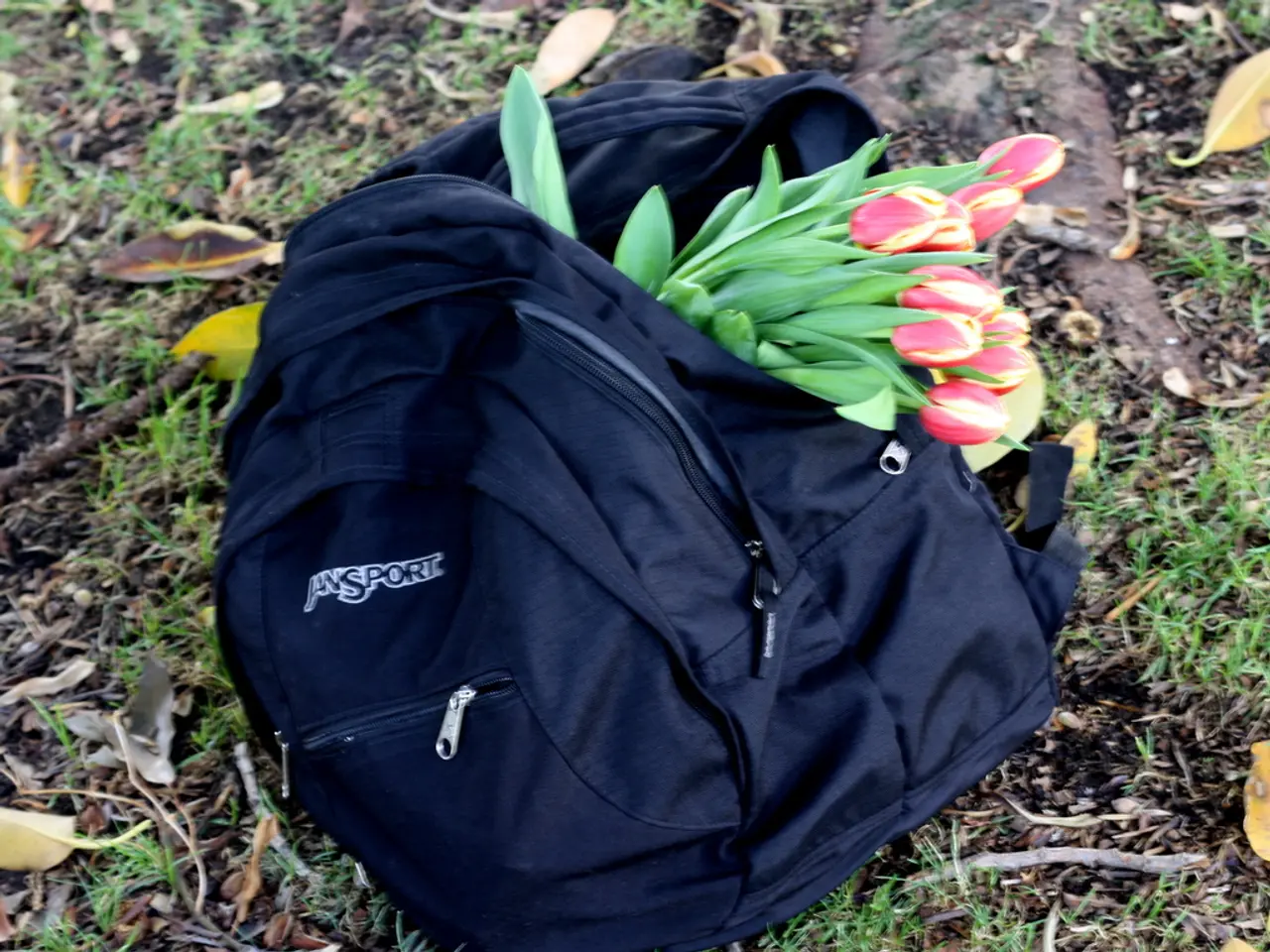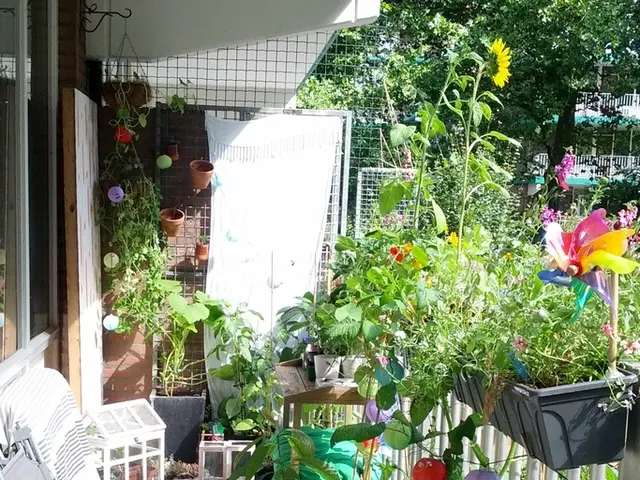Advantages of Employing Fabric Grow Bags Instead of Traditional Planters
In the world of horticulture, fabric grow bags are becoming increasingly popular as an alternative to traditional planters. These innovative plant containers are made from breathable, porous fabric materials, offering unique benefits for plant health and growth.
Key Differences and Benefits for Plant Health:
- Air Pruning and Root Health: The breathable fabric in fabric grow bags allows air to reach the roots, promoting a natural process called air pruning. When roots reach the edge of the bag, they dry out instead of circling around as they do in traditional pots. This process stimulates the growth of new, fine root tips, creating a denser, more fibrous, and healthier root system that absorbs water and nutrients more efficiently [1][3].
- Temperature Control: Fabric grow bags offer better temperature regulation. The porous fabric protects roots from overheating by allowing heat to escape, unlike plastic or ceramic planters that can trap heat and stress the plants’ root systems [1].
- Water Drainage and Moisture Control: The porous nature of fabric bags provides excellent drainage, preventing waterlogging and root rot. Fabric bags promote evaporation, which means they dry out faster than regular pots and thus require more attentive watering. Some grow bags are lined to better retain moisture while still providing air pruning benefits, which is useful in hot, dry conditions [1][3].
- Space Efficiency: Fabric grow bags come in various sizes and are lightweight and flexible, making them easy to move and efficient in small spaces. They can be used in tight urban gardens or areas with poor soil. Their flexibility also allows for growing multiple plants in larger bags as a raised bed alternative [3].
Comparing Fabric Grow Bags and Regular Planters:
| Aspect | Fabric Grow Bags | Regular Planters | |-------------------|--------------------------------------------------|------------------------------------------| | Root Health | Air pruning promotes dense, healthy roots | Roots can become rootbound, circling | | Temperature | Breathable fabric reduces overheating | May trap heat, stressing roots | | Watering | Excellent drainage, dries faster, needs more care| May retain water; risk of pooling | | Space Efficiency | Lightweight, flexible, ideal for small/urban areas | Typically rigid, heavier, less flexible |
These factors often make fabric grow bags a preferred choice for starters and gardeners looking to optimize plant health and manage container environments more effectively [1][3].
Additional Features:
- Fabric grow bags are space-efficient and versatile, making them ideal for small spaces and for both small and large scale gardening.
- Fabric grow bags minimize the risk of over-watering by allowing water to drain away, preventing rot, mold, fungus growth, and diseases.
- Fabric grow bags are available in tan or black shades.
- Fabric grow bags can be folded and stored easily, making them convenient for seasonal use.
- Fabric grow bags are a popular method for growing plants, originating in the late 70s to early 80s due to their practicality and resilience to severe weather changes.
- Grow bags can be used as a temporary solution or as standalone planters for individual or multiple plants, particularly in indoor gardens or hydroponic gardens.
- ECO gardener grow bags come in different shapes to accommodate small to large plants and are heavy-duty, designed to last for years of use.
In conclusion, fabric grow bags offer numerous advantages in promoting healthier plant growth through their unique features, making them an attractive choice for gardeners seeking to optimize their container gardens.
[1] "Fabric Grow Bags: Pros and Cons." Gardener's Path, 2021, https://www.gardenerspath.com/plants/container-gardening/fabric-grow-bags-pros-and-cons/
[3] "Fabric Grow Bags for Plants: The Ultimate Guide." The Spruce, 2021, https://www.thespruce.com/fabric-grow-bags-for-plants-1397127
- The unique benefits of fabric grow bags in home-and-garden lifestyle include improved root health, better temperature regulation, and enhanced water drainage and moisture control.
- Gardeners seeking to optimize their home-and-garden spaces can find fabric grow bags advantageous, particularly for small spaces and indoor gardens, due to their space efficiency, versatility, and resistance to severe weather changes.





